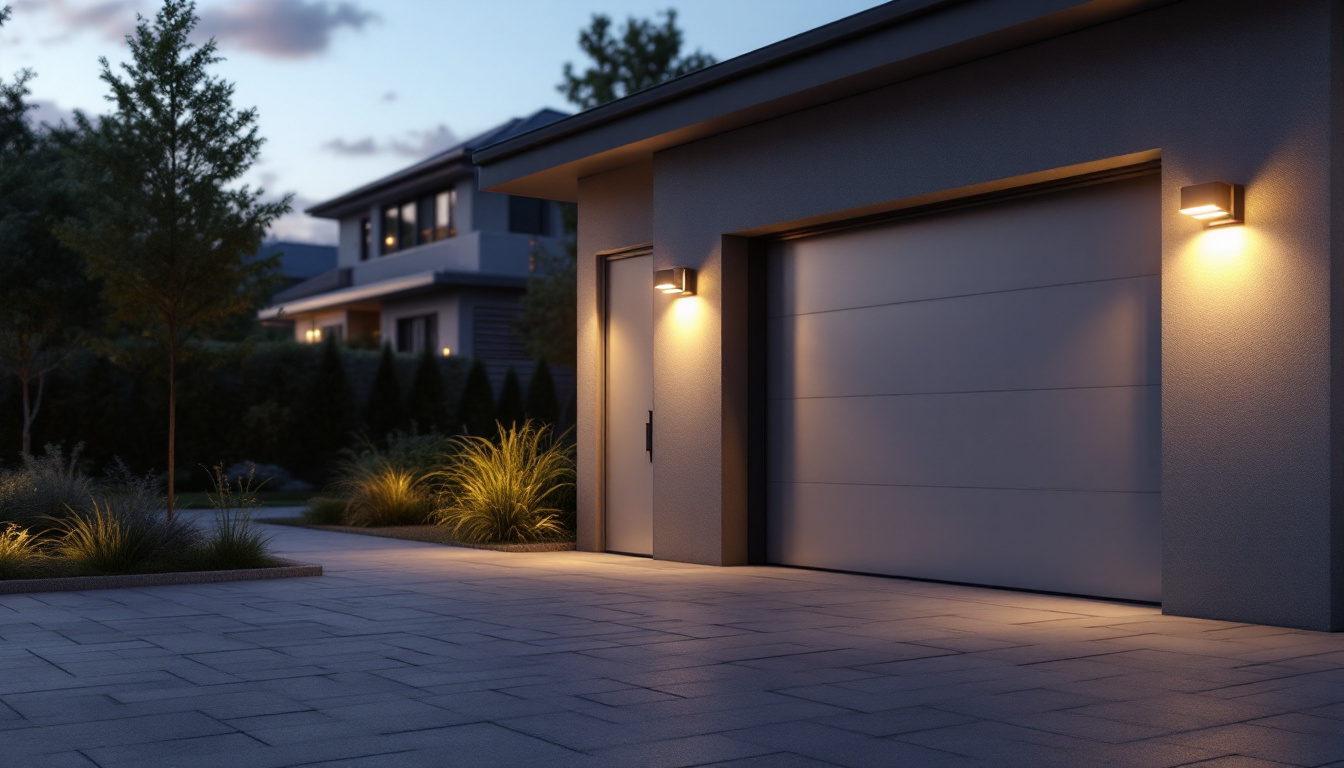
In the world of landscaping, lighting plays a pivotal role in enhancing the beauty and functionality of outdoor spaces. For lighting contractors, understanding the nuances of landscaping spotlights is essential to delivering exceptional results. This article delves into key facts and insights that every lighting contractor should know, ensuring they can provide top-notch service to their clients.
Landscape lighting serves multiple purposes, from aesthetic enhancement to safety and security. It transforms ordinary outdoor spaces into inviting environments, allowing homeowners to enjoy their gardens even after sunset.
One of the primary reasons for incorporating landscape lighting is to highlight architectural features and natural elements. Well-placed spotlights can draw attention to trees, shrubs, and pathways, creating a visually stunning ambiance. For contractors, understanding the principles of light and shadow is crucial in achieving the desired effect. Using warm tones can evoke a cozy atmosphere, while cooler tones can create a more modern feel. Additionally, creative lighting techniques such as uplighting and downlighting can add depth and dimension to the landscape, making it more dynamic and interesting. For example, uplighting a large tree can accentuate its height and structure, while downlighting can mimic the natural glow of moonlight, enhancing the serene quality of a garden space at night.
In addition to aesthetics, landscape lighting significantly improves safety. Illuminated pathways and steps reduce the risk of accidents, while well-lit areas deter potential intruders. Lighting contractors must consider practical aspects when designing a lighting plan, ensuring that all critical areas are adequately illuminated without creating harsh glare. This balance is essential for both functionality and comfort. Moreover, strategically placed motion sensor lights can provide an added layer of security, activating when someone approaches, which not only alerts homeowners but also serves as a deterrent to unwanted visitors. The integration of smart lighting systems allows homeowners to control their landscape lighting remotely, providing convenience and peace of mind, especially when away from home. By combining safety features with aesthetic enhancements, landscape lighting can create a harmonious outdoor environment that is both beautiful and secure.
Understanding the various types of landscape lighting is fundamental for any lighting contractor. Each type serves a specific purpose and can be used creatively to enhance outdoor spaces.
Spotlights are versatile fixtures that provide focused illumination. They are ideal for highlighting specific features, such as sculptures, trees, or architectural elements. When selecting spotlights, contractors should consider beam angles, wattage, and color temperature to achieve the desired effect. A narrow beam angle is perfect for accentuating details, while a wider beam can illuminate larger areas. Additionally, the use of adjustable spotlights allows for flexibility in directing light where it is most needed, making them a favorite among landscape designers. By strategically placing spotlights, contractors can create dramatic shadows and textures that add depth and intrigue to the landscape, transforming ordinary features into captivating focal points.
Path lights are essential for guiding visitors safely along walkways. These fixtures come in various styles and heights, allowing contractors to choose options that complement the overall design of the landscape. Installing path lights at regular intervals ensures that pathways are well-lit, enhancing both safety and aesthetics. Furthermore, path lights can be designed to blend seamlessly with the surrounding flora, using materials like copper or stainless steel that age beautifully over time. The warm glow of path lighting not only illuminates the way but also creates an inviting atmosphere, encouraging outdoor gatherings and evening strolls. By incorporating dimmable options, contractors can also adjust the brightness to suit different occasions, enhancing the versatility of the outdoor space.
Flood lights provide broad illumination and are often used for larger areas, such as gardens or patios. They can be mounted on walls or poles and are effective for security purposes as well. Contractors should be mindful of the placement and angle of flood lights to avoid light pollution and ensure even coverage. In addition to their functional benefits, flood lights can also be used creatively to wash walls or trees in light, creating a stunning backdrop for outdoor events. With advancements in LED technology, many flood lights now offer energy-efficient options that not only reduce electricity costs but also have a longer lifespan, making them a wise investment for any landscape project. By utilizing smart controls, contractors can program flood lights to turn on at specific times or in response to motion, enhancing both security and convenience in outdoor spaces.
Effective landscape lighting design requires careful planning and consideration of various factors. From the layout of the space to the preferences of the homeowner, each element plays a role in creating a successful lighting scheme.
Before installing any lighting fixtures, contractors should conduct a thorough assessment of the outdoor space. This includes evaluating the existing landscape features, the layout of pathways, and the intended use of the area. By understanding the space, contractors can create a tailored lighting plan that enhances both beauty and functionality. Additionally, considering seasonal changes in the landscape is essential; for instance, trees may bloom in spring and lose their leaves in fall, which can affect how light interacts with the space throughout the year. A well-thought-out plan will take these dynamics into account, ensuring that the lighting remains effective and visually appealing in every season.
Engaging with clients to understand their preferences is crucial. Some may prefer subtle lighting that creates a serene atmosphere, while others may desire bold, dramatic effects. By discussing options and showing examples, contractors can align their vision with the client’s expectations, ensuring satisfaction with the final result. It’s also beneficial to explore the emotional impact of different lighting styles; for example, warm lighting can evoke feelings of comfort and relaxation, while cooler tones might be more energizing and modern. By tapping into the psychological aspects of lighting, contractors can help clients articulate their desires more clearly and create a space that resonates with their personal style.
In today’s environmentally conscious world, energy efficiency is a significant consideration. LED lighting has become the go-to choice for many contractors due to its longevity and low energy consumption. Educating clients about the benefits of LED fixtures can enhance their experience and contribute to sustainable practices in landscaping. Furthermore, incorporating smart lighting technology can elevate energy efficiency even further. Features such as motion sensors, timers, and dimmers allow homeowners to control their lighting based on their needs, reducing waste and optimizing usage. This not only leads to lower energy bills but also promotes a more sustainable approach to outdoor living, aligning with the growing trend of eco-friendly home improvements.
Proper installation techniques are vital for the longevity and effectiveness of landscape lighting. Lighting contractors must be skilled in various installation methods to ensure that fixtures are securely placed and function optimally.
One of the most critical aspects of installation is managing wiring and connections. Contractors should follow best practices to ensure that all wiring is buried at an appropriate depth and protected from the elements. Using weather-resistant connectors and fixtures will enhance the durability of the lighting system and reduce maintenance needs.
Placement of fixtures can significantly affect the lighting outcome. Contractors should consider the height, angle, and distance of each fixture from the objects they are illuminating. Experimenting with different placements during the installation process can help achieve the desired lighting effect before finalizing the setup.
Once the landscape lighting system is installed, ongoing maintenance is necessary to keep it functioning effectively. Lighting contractors should provide clients with guidance on how to care for their systems and troubleshoot common issues.
Encouraging clients to conduct regular inspections of their lighting systems can prevent minor issues from escalating. Checking for burnt-out bulbs, damaged fixtures, and loose connections can save time and money in the long run. Contractors can offer maintenance services or provide clients with a checklist for self-inspections.
Lighting contractors should be prepared to address common problems that clients may encounter. These can include flickering lights, inconsistent brightness, or complete outages. Understanding the underlying causes, such as faulty wiring or incompatible fixtures, allows contractors to provide effective solutions quickly.
Staying updated on the latest trends in landscape lighting can give contractors a competitive edge. Innovations in technology and design continue to shape the industry, offering new opportunities for creativity and efficiency.
Smart lighting technology has gained popularity, allowing homeowners to control their landscape lighting remotely via smartphones or voice-activated devices. Contractors should familiarize themselves with these systems, as they offer enhanced convenience and flexibility for clients. Integrating smart technology into lighting designs can elevate the overall experience and appeal to tech-savvy homeowners.
Solar-powered lighting is another trend that aligns with sustainability efforts. These fixtures harness solar energy during the day and illuminate at night without relying on traditional power sources. Contractors can educate clients about the benefits of solar lighting, including reduced energy costs and minimal installation requirements.
For lighting contractors, mastering the essentials of landscaping spotlights is crucial for delivering exceptional service. By understanding the importance of landscape lighting, the various types available, and effective design and installation techniques, contractors can create stunning outdoor spaces that enhance both beauty and safety. Staying informed about trends and maintenance practices ensures that clients receive the best possible experience, ultimately leading to lasting relationships and successful projects.
In a field where creativity meets functionality, lighting contractors have the opportunity to transform ordinary landscapes into extraordinary environments. By applying the insights and techniques discussed in this article, they can elevate their work and contribute to the growing demand for beautiful, well-lit outdoor spaces.
Ready to take your landscaping projects to the next level? Choose LumenWholesale for your lighting needs and experience the unbeatable combination of quality, affordability, and convenience. Our extensive range of spec-grade lighting products ensures that you can create stunning outdoor spaces that stand out. Say goodbye to inflated markups and hello to superior lighting at wholesale prices, with the added benefit of free shipping on bulk orders. Elevate your lighting game and give your clients the exceptional service they deserve. Discover the best value in wholesale lighting by visiting Wholesale Lighting at the Best Value today.

Discover expert insights on LED sconce light fixtures with our comprehensive guide tailored for lighting contractors.

Discover why hydro farms are becoming essential for lighting contractors.

Discover the top strategies lighting contractors use to maximize efficiency and aesthetics with outdoor garage solar lights.

Illuminate your projects with our comprehensive guide on driveway solar lamp posts.